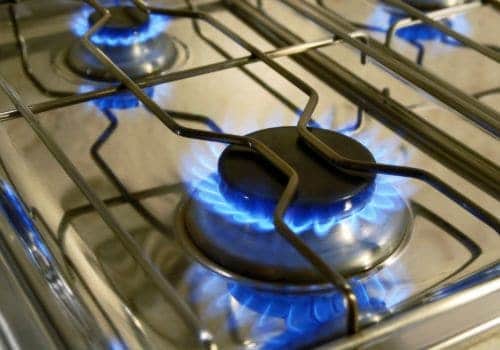Professional Gas Installer Techniques for Seamless and Reliable System Assimilation
Checking out the intricacies of expert gas setup, one need to value the precision and know-how needed for seamless system assimilation. These tools, combined with rigorous adherence to safety and security requirements, make sure extensive system testing and optimum performance.
Precision Planning
In the realm of gas setup, precision planning is paramount to guaranteeing both safety and security and performance. The complexity of gas systems demands careful focus to detail from the outset. A detailed strategy starts with a detailed site analysis, determining possible dangers and recognizing the details demands of each setting. This preliminary analysis establishes the phase for the growth of a strategic strategy that aligns with market standards and regulative compliance.

Collaborating with other specialists, such as architects and designers, is vital to incorporating the gas setup seamlessly within the wider building and construction framework. This collaboration ensures that all aspects of the setup are synchronized, reducing risks and improving total efficiency. Accuracy planning in gas installation is not merely a step-by-step action; it is the foundation upon which risk-free, dependable, and efficient gas systems are constructed.
Advanced Tools and Technology
Structure upon the structure of precision preparation, the assimilation of innovative devices and technology raises the standards of gas installation even more. Contemporary gas installers leverage advanced devices that improves accuracy and performance, making certain seamless and trusted system combination. Instruments such as digital manometers provide exact stress analyses, vital for adjusting gas systems to optimal efficiency levels. Additionally, thermal imaging cams are utilized to find leakages and ensure system integrity, assisting in aggressive maintenance and reducing the chance of functional disruptions.
The development of clever modern technology has even more revolutionized gas installations. gas installer. Smart meters and IoT-enabled devices permit real-time monitoring and remote diagnostics, granting installers the ability to anticipate issues prior to they show up into bigger problems. This positive strategy not only enhances system performance however additionally prolongs the life-span of the installations
Moreover, progressed software application solutions help in thorough planning and implementation. CAD software application help in creating intricate gas systems, ensuring spatial effectiveness and conformity with design requirements. These digital tools, when coupled with skilled workmanship, add dramatically to the precision and reliability of gas setups, symbolizing the future of the market where modern technology and proficiency assemble.
Safety And Security Criteria Compliance
Following strenuous safety and security requirements is extremely important in the area of gas installation, where also small oversights can have significant consequences. Conformity with recognized safety procedures ensures the security of both installers and end-users, mitigating risks such as gas leakages, explosions, or carbon monoxide webpage poisoning. Professional gas installers should stay vigilant, constantly upgrading their expertise of industry laws, including neighborhood, national, and worldwide codes.
The core of safety standards compliance hinges on precise planning and execution. Installers are responsible for carrying out detailed risk analyses prior to beginning any type of task, recognizing potential risks and carrying out control measures. This involves recognizing the residential properties of various gases, the proper use materials, and guaranteeing all elements satisfy licensed safety and security criteria.
Furthermore, recurring education and certification are vital for keeping high criteria. Installers must take part in training programs and workshops, focusing on present safety and security technologies and regulatory changes. Such dedication to specialist development not only improves their skillset however likewise reinforces the market's reputation for reliability and security.

Reliable System Screening
Effective system testing is crucial in ensuring the optimum efficiency and safety of gas setups. It involves a collection of meticulous procedures made to recognize possible defects and confirm that the set up systems operate as planned. Trick aspects consist of pressure testing, leakage detection, and performance analysis. Stress testing confirms the system's capacity to maintain appropriate pressure without loss, thus guarding versus leakages. Utilizing advanced equipment and methods, professionals can accurately determine the system's capacity to endure operational demands.

Performance analysis encompasses the assessment of all system parts to identify their correct setup and procedure. Reliable system testing not only assures security however additionally enhances customer self-confidence in the integrity of the installation.
Troubleshooting and Upkeep
Troubleshooting and upkeep represent the foundation of maintaining gas setups' performance and security over time. Doing routine evaluations allows installers to identify go possible problems before they intensify, ensuring ongoing functional performance and security. A methodical approach to fixing includes understanding system schematics and employing analysis tools to isolate issues accurately. Using a methodical procedure, such as checking pressure degrees, examining connections, and verifying control setups, allows specialists to pinpoint malfunctions quickly.
Preventive maintenance is equally vital, concentrating on regular checks and servicing to expand the life-span of the gas system. Important tasks include cleansing burners, analyzing vents for blockages, and assessing seals for wear. These practices help prevent pricey repair services and boost the system's reliability. Preserving comprehensive documents of maintenance activities is also critical, as it permits tracking historical data, which can be very useful for future fixing sessions.
Furthermore, staying updated with innovations in innovation and market laws guarantees that maintenance techniques are straightened with modern standards. This aggressive position not just guarantees compliance but likewise enhances the performance of gas installments. Subsequently, a durable troubleshooting and maintenance routine is crucial for specialists dedicated to delivering seamless and dependable system integration.
Final Thought
The combination of gas systems demands precision preparation, progressed devices, and rigorous adherence to security standards. These detailed techniques jointly assist in seamless system assimilation, underscoring the significance of competence and accuracy in preserving high criteria of safety and security and integrity.